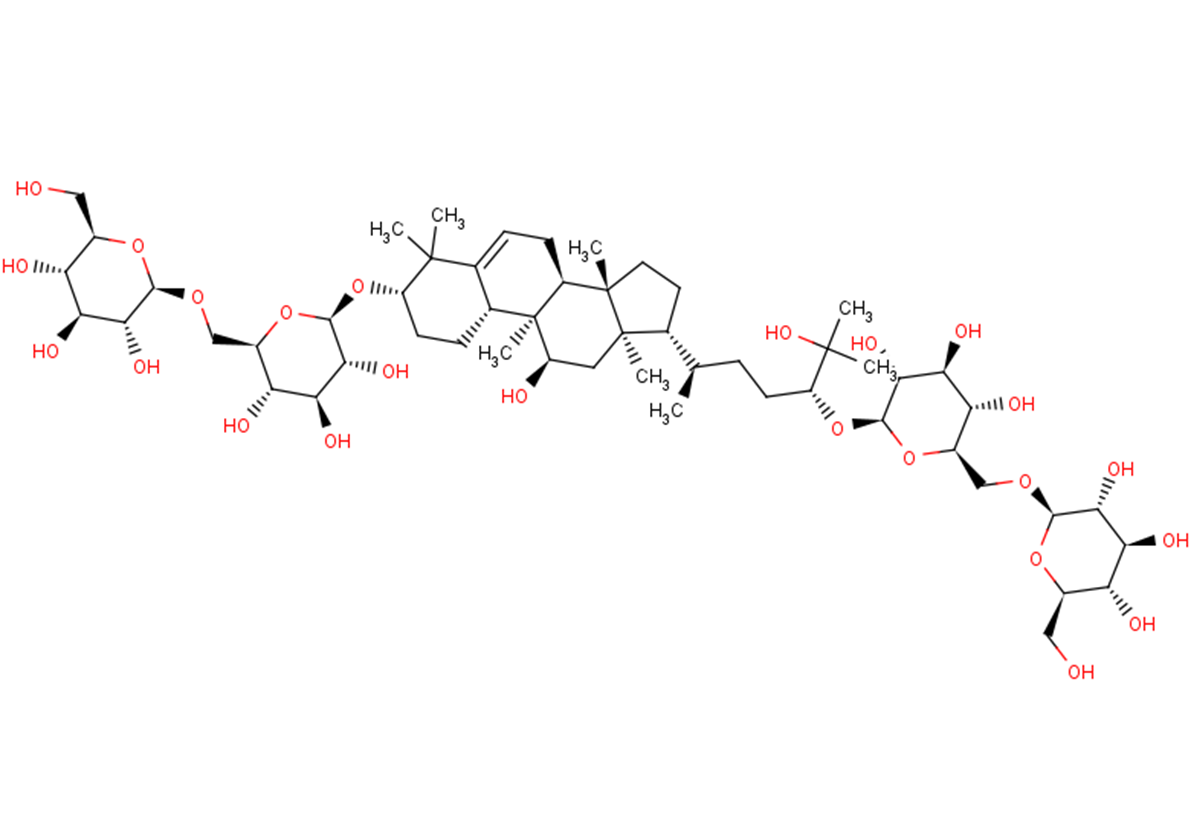
Mogroside IVa
CAS No. 88901-41-1
Mogroside IVa( —— )
Catalog No. M24912 CAS No. 88901-41-1
Mogroside IVa is a natural product from Siraitia grosvenorii Swingle.
Purity : >98% (HPLC)
 COA
COA
 Datasheet
Datasheet
 HNMR
HNMR
 HPLC
HPLC
 MSDS
MSDS
 Handing Instructions
Handing Instructions
| Size | Price / USD | Stock | Quantity |
| 5MG | 249 | In Stock |


|
| 10MG | 426 | In Stock |


|
| 25MG | 683 | In Stock |


|
| 100MG | Get Quote | In Stock |


|
| 200MG | Get Quote | In Stock |


|
| 500MG | Get Quote | In Stock |


|
| 1G | Get Quote | In Stock |


|
Biological Information
-
Product NameMogroside IVa
-
NoteResearch use only, not for human use.
-
Brief DescriptionMogroside IVa is a natural product from Siraitia grosvenorii Swingle.
-
DescriptionMogroside IVa is a natural product from Siraitia grosvenorii Swingle.
-
In Vitro——
-
In Vivo——
-
Synonyms——
-
PathwayOthers
-
TargetOther Targets
-
RecptorOthers
-
Research Area——
-
Indication——
Chemical Information
-
CAS Number88901-41-1
-
Formula Weight1125.29
-
Molecular FormulaC54H92O24
-
Purity>98% (HPLC)
-
SolubilityDMSO: 90 mg/mL?(79.97 mM;?Need ultrasonic)
-
SMILESC[C@H](CC[C@H](C(C)(C)O)O[C@H]1[C@@H]([C@H]([C@@H]([C@H](O1)CO[C@H]2[C@@H]([C@H]([C@@H]([C@H](O2)CO)O)O)O)O)O)O)[C@H]3CC[C@@]4([C@@]3(C[C@H]([C@@]5([C@H]4CC=C6[C@H]5CC[C@@H](C6(C)C)O[C@H]7[C@@H]([C@H]([C@@H]([C@H](O7)CO[C@H]8[C@@H]([C@H]([C@@H]([C@H](O8)CO)O)O)O)O)O)O)C)O)C)C
-
Chemical Name——
Shipping & Storage Information
-
Storage(-20℃)
-
ShippingWith Ice Pack
-
Stability≥ 2 years
Reference
1.Chun L I , Lin L , Luo M , et al. A new natural saponin from fruits of Siraitia grosvenorii[J]. China Journal of Chinese Materia Medica, 2011, 36(6):721.
molnova catalog



related products
-
Dibutyl maleate
Dibutyl maleate is a diester of the Maleic Acid and can be used as an intermediate of the synthesis of antibacterial compounds.
-
m-PEG7-alcohol
m-PEG7-alcohol is a PEG-based PROTAC linker that can be used in the synthesis of PROTACs.
-
Nonaethylene glycol ...
Nonaethylene glycol monododecyl ether is a nonionic surfactant and polyethylene glycol (PEG) detergent. It can be used to form initial coalesced O/W emulsion droplets and for protein separation and purification.



 Cart
Cart
 sales@molnova.com
sales@molnova.com


